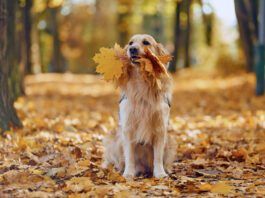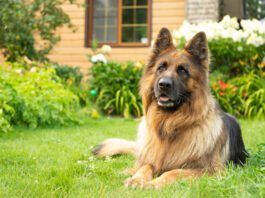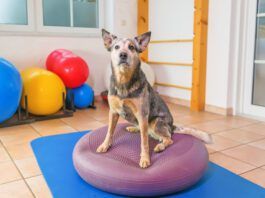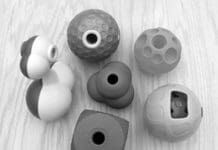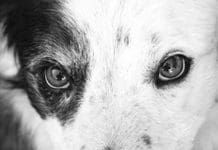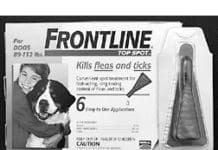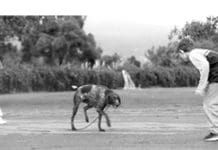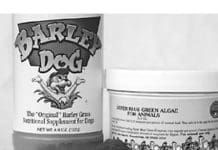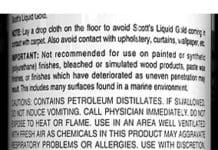Treat-Dispensing Dog Toys
Interactive toys that require your dog to do something to make the toy pay out food treats are a great invention. They can assist with behavior modification programs and help to keep your dog busy, out of trouble, and well-behaved in your home. The more time your dog spends pursuing one, the more energy she expends in your absence, the more tired she is by the time you get home. And a tired dog is a well-behaved dog. First on the interactive scene was the Buster Cube, followed by the Roll-A-Treat Ball, now joined by a whole host of other interactive products. We decided it was high time to compare some of these treat-dispensing toys to see which ones can give you and your dog the most value.
Older Dogs and the Onset of Cataracts
Cataracts make the lens of the eye opaque or cloudy, which gradually reduces vision to the point of blindness. In their early stages, cataracts cause blurring and distortion of vision, but they are invisible to the naked eye. By the time most owners notice them, cataracts involve more than 60 percent of the dog's eye. Cataracts often accompany other illnesses, such as diabetes and hypothyroidism (low thyroid function). Surgery performed by a veterinary ophthalmologist is the only treatment considered effective in conventional veterinary medicine and is indicated only in cases where the cataracts are not a result of a secondary disease such as diabetes.
Drinking the Purest Water Possible is Important to Your Dogs Health
Water plays a critical and complex role in the health of all mammals, constituting 55 to 75 percent of the body mass of warm-blooded creatures. A fetus develops in its mother’s amniotic sac and, from birth till death, water bathes and fills every one of a mammal’s billions of cells. In essence, the bodies of people, dogs, and other mammals are water-cooled engines. Releasing water vapor by panting and sweating through its paw pads induces gentle cooling in a dog’s body. Water also lubricates a dog’s joints and muscles, cushions the spaces between each individual cell, and fills up all of the minute hollows in a dog’s body. The principal element of blood, water transports oxygen to all canine body tissues, and helps the white blood cells produced by a dog’s immune system move about its body and fight infections.
Eliminate Fleas Without Poisons
Today, spot-on flea products are advertised in every sort of media available to animal guardians and veterinarians, and are touted as safe and effective. However, the safety record of these products is not as spotless as the manufacturers would make us believe. After all, they contain pesticides, which are poisons, and they also contain toxic ingredients that are not disclosed to consumers or even veterinarians without applying through the Freedom of Information Act. The danger presented by these products is apparent in the hundreds of incident reports that sit in the Environmental Protection Agency's files not to mention the manufacturer's own animal laboratory studies.
Dangers of Spot-On Pesticides for Fleas and Ticks
Some people will never give up their use of spot-on pesticides, despite the health risks to themselves and their dogs. I know you're out there, and I understand. Perhaps you have a dog with a flea allergy so severe a dog who scratches and chews himself so badly that he develops severe hair loss, hot spots
Are Topical Flea Killers Safe?
The newest generation of pesticides are being marketed as far less harmful than the old ones. But they are deeply misrepresented as harmless.
Getting Your Children Involved in Training the Family Dog
One of the things that parents almost always say when they decide to add a dog to the family is, It will help teach the kids about responsibility." That's the hope
Make Your Home Healthier for You and Your Animal Companions
A healthy home is a happy home. We can all agree on that. How can you make your home healthier for you and your animal companions? We can tell you 20 ways, right off the top of our heads. We’ll divide our suggestions into four areas: Cleanliness, Diet, Environment, and Lifestyle.
If Your Dog is Ever Exposed to Chemicals – React Quickly
We hope you’ll never need the information in this article – but if your dog is doused with chemicals or survives a fire, these tips can help prevent long-term health damage. Of course, if you are aware your dog has been exposed to toxic smoke, dust, or chemicals, the first thing you want to do (after taking care of yourself and the rest of your human family) is to wash him as thoroughly as possible. Don’t forget to wash your dog’s collar, leash, and any bedding that he may have come in contact with prior to the bath.
Can Dogs Eat Garlic? Yes, in Small Quantities
One dictum for dealing with an ailing dog is to make sure he doesn’t get sick in the first place. And one way to achieve that noble end is to feed him a maintenance dose of garlic, a “wonder herb” that has a long list of beneficial effects for the dog in your life. Garlic has antiseptic, antibiotic, antifungal, and antimicrobial properties. It can be used as an anthelmintic (de-worming agent). It acts as a potent expectorant (helps bring phlegm or mucous up and out of the airway). It can lower blood pressure and prevent blood clots. And it can support the formation of good bacteria in the digestive tract.
Could Your Dog Be Breathing In Toxins in Your Home?
While we often consider our homes as sanctuaries – places of peace and safety – we may actually be living in danger zones filled with toxic airborne chemicals. Many of the building materials and housekeeping substances we use in our homes are air pollutants, capable of causing acute and long-term damage to our health, as well as the health of our dogs. We are only rarely aware of indoor air pollutants in the air we breathe – and many people are completely unaware of the potential damage that diminished air quality has on the health of every animal (including us) breathing that air.
Proper Identification Tags Can Save Your Dog’s Life
We can never say it often enough or loudly enough – proper identification can save your dog’s life. A dog license is required by law to be worn on your dog’s collar in most places in this country. Owner information from a license can usually be tracked through the local Animal Services agency or Health Department so the lost dog can be returned to his owner if he is picked up by an Animal Services Officer or turned over to an animal shelter by a helpful humanitarian. Obtaining your license in a timely manner can also save you money, since failure to do so can result in citations and fines.



